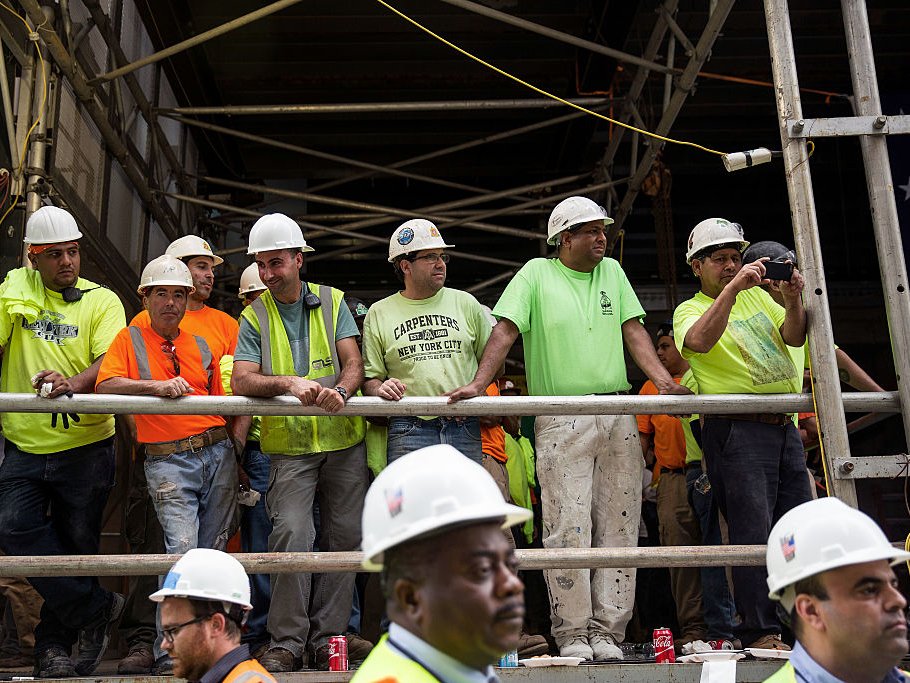
At 8:30 a.m. ET on Friday, the Bureau of Labor Statistics will release its headliner monthly report on America’s employment situation.
For February, here’s what Wall Street is forecasting:
- Nonfarm payrolls: +200,000
- Unemployment rate: 4.7%
- Average hourly earnings month-on-month: +0.3%
- Average hourly earnings year-on-year: +2.7%
- Average weekly hours worked: 34.4
Here comes the Fed
The number of job gains is expected to support the Federal Reserve’s view that the labor market is ripe enough for another rise in interest rates when it meets next week. The pace has slowed down but not to economists’ surprise, since that was consistent with a declining unemployment rate.
But the jobs report could also show that inflation, the other leg of the Fed’s mandate, is still subpar. Wage growth stumbled in February. Average hourly earnings grew 2.5% in January, down 0.4 percentage points from December, and below economists’ expectations. Higher wages would show that employers are being compelled to grant raises amid a shortage of available new workers — a consequence of labor-market tightening.
“If job gains of this magnitude continue andwagestilt up and inflation pressures build, the Fed will be forced to hike more than expected in 2017-2018,” said Mickey Levy, chief economist for Americas and Asia at Berenberg Capital Markets, in a note.
ADP blowout
On Thursday, economists at Goldman Sachs and Morgan Stanley hiked their forecasts for the number of jobs the US gained after a private-payrolls report from ADP Research Institute showed a blockbuster gain of 298,000.
“If you believe that number, then you must believe at the same time that real GDP growth is running close to a 5% annual rate … talk about La La Land,” said David Rosenberg, the chief economist at Gluskin Sheff, in a note.
Much of the increase in ADP’s print was due to a record rise in goods-producing industries like manufacturing and construction. Rosenberg cautioned that an unusually warm February — the second-warmest on record — may have created a seasonal distortion that, for example, made home construction easier.
Still, ADP’s report points to strong official numbers from the BLS, Rosenberg said.
There are other indicators suggesting that February was a strong month. Initial jobless claims, which count the number of people who file for unemployment insurance for the first time, remained near multi-decade lows in February; they fell to the lowest level since 1973 in the final week.
Also, the rise in business confidence since the election shows that employers are not positioning for an economic downturn. Surveys of purchasing managers in the manufacturing and services sectors showed that employment was still in expansionary territory.
‘Together, we are going to #MAGA’
Friday’s jobs report will be the first that covers a full period with Donald Trump as president. The BLS’ survey week in January was before inauguration day.
This week, Trump tweeted coverage of unofficial jobs reports.
“Great news,” he said about ADP’s release. “We are only just beginning. Together, we are going to #MAGA!”
He also mentioned LinkedIn’s Workforce Report, which showed that January and February were the strongest consecutive months for hiring in over a year.
And so, he’s likely to take the credit if the official jobs report is a blowout.
However, the president has not always been a fan of government data. Last January, he told NBC News that the jobs report was “90% fake.” He also said the unemployment rate was a “hoax,” although he may have been trying to distinguish between the headline U-3 rate, at 4.7%, and the higher U-6 rate (10.5%) that includes people who have given up on job hunting or work part-time but want full-time jobs.
In his speech to Congress last month, he said ninety-four million Americans were out of the labor force. But that includes students, retirees, and others who are in their prime-working age but aren’t necessarily looking for work.
NOW WATCH: A former HR exec who reviewed over 40,000 résumés says these 7 résumé mistakes annoy her













